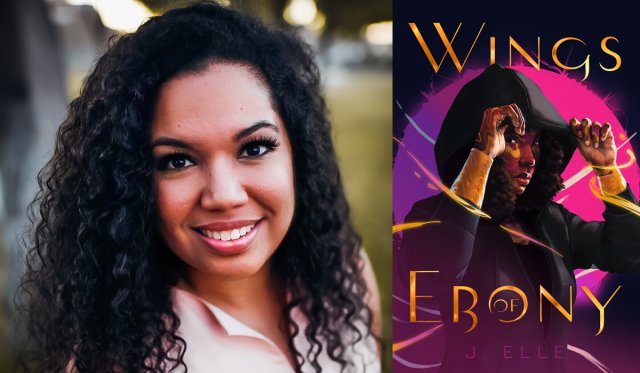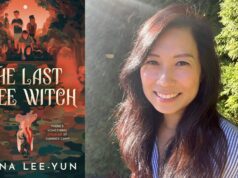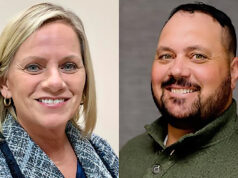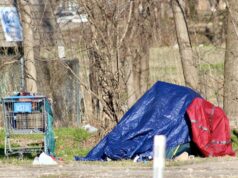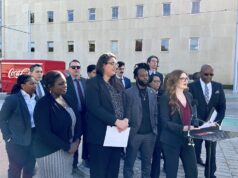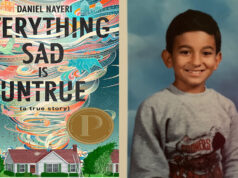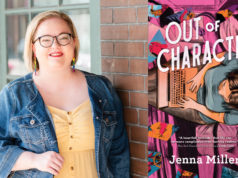
(Editor’s note: NonDoc’s Author Umbrella interviews up-and-coming writers, particularly authors of color, authors of disability and LGBTQ+ authors. The interviews have been transcribed and lightly edited for length and clarity.)
For this week’s installment of our Author Umbrella series, I interviewed J. Elle, author of Wings of Ebony. Her highly acclaimed debut novel, published by Denene Millner Books, a Simon & Schuster Books for Young Readers imprint, hits bookshelves on Jan. 26.
Here’s a short synopsis:
“Make a way out of no way” is just the way of life for Rue. But when her mother is shot dead on her doorstep, life for her and her younger sister changes forever. Rue’s taken from her neighborhood by the father she never knew, forced to leave her little sister behind, and whisked away to Ghizon — a hidden island of magic wielders.
Rue is the only half-god, half-human there, where leaders protect their magical powers at all costs and thrive on human suffering. Miserable and desperate to see her sister on the anniversary of their mother’s death, Rue breaks Ghizon’s sacred Do Not Leave Law and returns to Houston, only to discover that Black kids are being forced into crime and violence. And her sister, Tasha, is in danger of falling sway to the very forces that claimed their mother’s life.
Worse still, evidence mounts that the evil plaguing East Row is the same one that lurks in Ghizon — an evil that will stop at nothing until it has stolen everything from her and everyone she loves. Rue must embrace her true identity and wield the full magnitude of her ancestor’s power to save her neighborhood before the gods burn it to the ground.
Wings of Ebony follows Rue, a Black teen demigoddess, as she rises up against the racist deities poisoning her neighborhood with drugs, violence, and crime. You’ve mentioned that, like Rue, you grew up in poverty, and that her neighborhood, East Row, is based on Houston’s Third Ward, where you grew up. In what ways have your community, your neighborhood and your experiences informed your writing?
I’m from the “hood” and proud of that fact. My talents, gifts, and skills are a product of where my roots broke ground, the community that reared me. So, if someone can appreciate me as a person, they can, by extension, appreciate where I’m from. If they can look at me and see my magic, they can look at the neighborhood I got it from and see the magic there, too.
My successes and achievements cannot be separated from my community, which a lot of people try to do. When I speak about my home, the southeast side of Houston, it’s not them; it’s we.
I wanted readers to experience that as they walked in Rue’s shoes. I wanted them to live in the joy, the togetherness, the resilience, the unbridled love. That’s why I’m inspired to write stories in that space.
In a Publisher’s Weekly interview (which is one of the best author interviews I’ve ever read, by the way), you said something very powerful: “First off, the term ‘hood’ has been weaponized against my community, and I’m taking it back.” We really see this in the way magic is portrayed in Wings of Ebony. Because it’s not limited to Rue. It applies to her home, her community, her neighbors. How do you think the portrayal of inner-city communities as places of magic and power speaks to young, Black readers?
Oh my goodness, thank you! It was such an honor to be featured in Publisher’s Weekly like that. One of the most memorable experiences in my entire publishing journey.
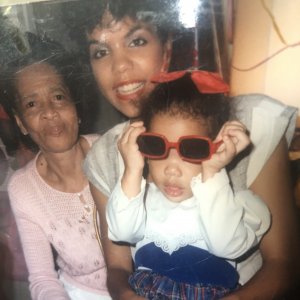
Every setting written into a television script, depicted in a movie, typed in the pages of a novel or aired on the 5 o’clock news involves intentional choices. Kids from inner-city communities (like me and my teenage sisters) see that narrative. And, sure, kids might appear busy on TikTok and not even paying attention, but these narratives linger in the periphery of a person. And they paint a picture of my home that’s frankly inaccurate, biased, oppressive and rooted in racism.
Imagine if the nomenclature around communities like mine was “magical,” “innovative,” “full of excellence” and so on. Where the news reports are full of love and joy and the ways in which we take care of one another. Consider what that depiction would do for the psyche of a child being raised in that community.
Wings of Ebony is a wonderful vehicle for teachers to have candid conversations about tough topics, such as racism and privilege. What questions do you hope Wings of Ebony spurs in the classroom?
The list of questions is far too vast for me to list here. But there’s a lot of meat in Wings of Ebony to dig into, and not in the ways one might think. I’ve portrayed characters, some to provide a mirror and others a lens.
There’s a lot here for readers from all walks of life to dig into, and I’m excited to know that once they read, they’ll be able to engage in conversation about the intersection of colonization, privilege, racism, and allyship through these nuanced characters, while subliminally having a conversation about themselves and the real world. I get giddy just thinking about it. Literature is magical like that — particularly fantasy. One step removed from reality, it can be a great forum for readers to explore topics that are hard to tackle head-on.
And, truly, never before have I seen the topic of privilege have such a national platform. It’s especially grieving that it took the events of 2020 to spur those conversations to national attention and bring such deep-seated racism and prejudice to light.
I wish my book wasn’t so relevant, to be honest. It hurts, still. 2020 is an open wound. I’m not sure if it’ll ever scab. For myself and others, kids included, trying to make sense of things around them, can it ever really heal? Without at the very least a nasty scar?
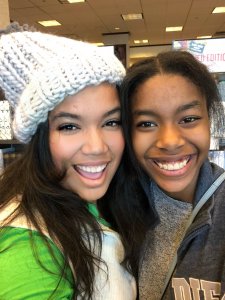
I’m hoping Wings of Ebony gives kids, who are bandaging and re-bandaging the same wounds, the space to process and ask questions that they couldn’t before. Questions they might not have even known they had.
I want teachers who feel a responsibility to give all their students a safe space, to feel equipped to bring up these topics and facilitate discussion. It’d be a beautiful thing to see topics such as racism, allyship and privilege not be polarizing, but instead unifying, galvanizing.
If we’re going to accomplish that as a national community, I believe it starts with being intentional, with having these conversations with the future leaders of our country at a very young age.
I think of writing as a labor of love, a public service. So, the year leading up to Wings of Ebony’s release, I created a robust 5-week curriculum aligned to Standards to help teachers accomplish this, which can be downloaded here.
You wrote Wings of Ebony in 35 days, which is absolutely awe-inspiring to me. When did you know you wanted to be a writer, and what spurred the shift between educator to author?
Honestly, I’ve always written things. But I never really allowed myself to mesh “the things I enjoy” with my “career goals.” Growing up, I was taught to pursue what was practical, what would provide financial security and build generational wealth for my family and the generations after me. And so I pursued medicine in college, but organic chemistry was a humbling experience!
I eventually switched my major to journalism because 1) I didn’t want to fail out of college, and 2) I was passionate about storytelling. I fell in love with it. But I still didn’t pursue it wholeheartedly.
I went into education because I’ve always been passionate about the formative role it played in my life. But, once I got married, my partner’s job required we move several times, sometimes multiple times in the same year, so holding a job was nearly impossible. I gave up teaching, sadly. And I miss it, literally, every day.
It wasn’t until several years later when a story came to me in the middle of the night. I started waking me up out of my sleep with scenes in my head, pictures of characters. It wouldn’t let me rest. So, I sat down and decided to complete an entire novel for the purpose of querying. That was the summer of 2018. And I did. It was a hot mess, let me tell you. But, after I’d completed one story, my appetite only revved up. I was utterly intoxicated by the freedom of writing, leaning into my passion. And I was in a fortunate place in my life having just closed a very successful small business I’d had. So, when Rue’s voice came to me, I put away that other hot mess I’d cut my teeth on, and set out to make her story my debut.
What has been your favorite aspect of writing Wings of Ebony? Plot, world building, character design, theme?
My favorite part of writing Wings of Ebony was putting so many of my experiences from growing up, my neighborhood, on the page of a book. I know to many it’ll be like exploring a new world, but to be able to canonize my community like that, with magic, was honestly life changing for me.
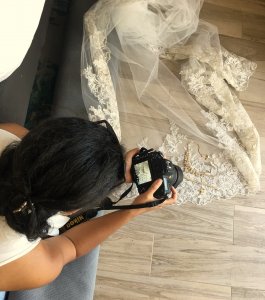
What is an interesting fact that your readers may not know about you yet?
I used to be a wedding photographer, and I love, love, loved it. My portrait and wedding photography has been featured in Brides Magazine, the Huffington Post, Conde Nast and the CNN Morning Show.
What elements of Wings of Ebony do you think would most appeal to OKC readers?
Oklahoma City has a heart that loves a wild ride. With its cowboy culture and appreciation for adventure, I think OKC readers will fall in love with the edge-of-your-seat tension and twisty plot in Wings of Ebony.
Wings of Ebony also has a bit of southern flavor to it, including a deep appreciation for community, togetherness, and food that I think OKC-ers will rave about! Ultimately, OKC is a city with a lot of passion and heart, and that’s who Rue, the main character is, through and through. They’re going to love it — I just know it.









